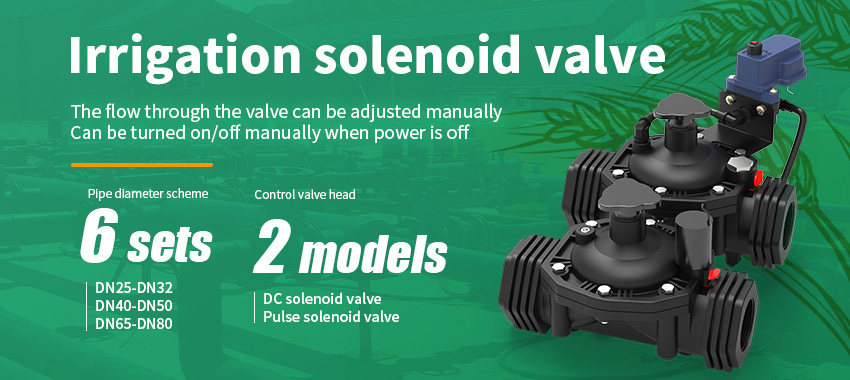Irrigation is a vital component of agriculture, landscaping, and gardening, as it provides plants with the necessary water for growth and sustainability. An irrigation system consists of various elements, and one of the key components is the irrigation control valve. In this article, we will explore in detail what an irrigation control valve is, how it works, and its importance in efficient water management.

Understanding the Irrigation Control Valve:
An irrigation control valve is a mechanical device that regulates the flow of water in an irrigation system. It acts as a gatekeeper, allowing water to pass through or shutting it off completely. The valve is typically installed between the main water supply and the irrigation pipes, providing control over water distribution. When the valve is open, water flows through the pipes and reaches the designated areas for irrigation. When the valve is closed, water flow is halted, preventing any further irrigation.
Components of an Irrigation Control Valve:
Valve Body: The valve body is the main housing of the control valve. It is typically made of durable materials such as brass, PVC, or stainless steel. The body contains the valve’s internal components and provides the connection points for the water supply and irrigation pipes.
Valve Solenoid:
The solenoid is an electromagnetic coil that controls the opening and closing of the valve. It is connected to an electrical controller that sends signals to the solenoid, instructing it to either open or close the valve. When the solenoid receives an electrical current, it creates a magnetic field that lifts a plunger or diaphragm, allowing water to flow. When the current is cut off, the plunger or diaphragm returns to its original position, closing the valve.
Plunger or Diaphragm:
The plunger or diaphragm is the moving part of the valve that blocks or permits water flow. In a plunger-style valve, the plunger is lifted when the solenoid receives a current, allowing water to pass through. When the solenoid is deactivated, the plunger returns to its resting position, stopping water flow. Diaphragm-style valves use a flexible diaphragm that flexes when the solenoid is activated, creating an opening for water to flow. When deactivated, the diaphragm regains its original shape, closing the valve.
Valve Bonnet and Bleed Screw:
The valve bonnet is the cover that protects the internal components of the valve, including the solenoid and plunger or diaphragm. It ensures that the valve remains watertight and prevents debris from entering. The bleed screw is a small screw located on top of the bonnet. By opening the bleed screw, water pressure within the valve is released, preventing water hammer and allowing for manual operation of the valve if needed.
Importance of Irrigation Control Valves:
Water Conservation: Irrigation control valves are essential for water conservation. By controlling the flow of water, the valves enable precise and efficient irrigation. They allow the desired amount of water to be distributed to specific areas, preventing over-watering or under-watering. This helps conserve water resources and reduces water waste.
Flexibility and Zoning:
Control valves enable the design of irrigation systems with multiple zones. Each zone can have its own control valve, allowing for individualized watering schedules and tailored irrigation for different plants or areas. This flexibility ensures that each zone receives the appropriate amount of water based on its specific needs.

Automation and Efficiency:
With the integration of advanced irrigation controllers, control valves can be automated and programmed to operate at specific times and durations. This eliminates the need for manual monitoring and operation. Automated irrigation systems with control valves improve efficiency, as water is distributed consistently and precisely, minimizing water loss and optimizing plant growth.
Maintenance and Repair:
Control valves play a crucial role in the maintenance and repair of irrigation systems. By isolating specific zones or sections of the system, control valves allow for easy maintenance without interrupting the entire irrigation operation. This makes troubleshooting, repairs, and replacements more manageable and cost-effective.
Conclusion:
An irrigation control valve is a vital component of an irrigation system. It regulates the flow of water, ensuring efficient water management and precise irrigation. Control valves conserve water resources, provide flexibility in zoning and scheduling, automate irrigation processes, and facilitate maintenance and repairs. Understanding the importance of irrigation control valves helps optimize water usage and promote healthy plant growth in agriculture, landscaping, and gardening practices.